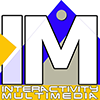Contents
Interactivity further enhances this process. Interactive learning content, like H5P tasks, simulations, or gamified exercises, transforms passive information intake into an active experience. Learners do not only watch or read; they engage, explore, and apply what they have learned immediately. This increases motivation, retention, and ultimately success.
The FL3 Framework actively promotes the integration of multimedia and interactive tools across its 12 sectors, guiding educators to design high-quality, learner-centred experiences. It ensures that technology is not used for its own sake but to support pedagogy, creativity, and engagement.
Multimedia and Interactive Content in the Flipped Learning 3.0 Framework
The Flipped Learning 3.0 Framework (FL3) goes far beyond the traditional flipped classroom. It promotes student-centred learning, where knowledge acquisition happens mostly outside the classroom and class time is used for active application.
In this approach, multimedia and interactive content play a crucial role. Videos, podcasts, infographics, or interactive quizzes allow learners to engage with new content at their own pace. This pre-class preparation frees in-class time for collaborative problem-solving and personalised support. Interactivity – such as self-checks, simulations, or discussion forums – transforms passive learning into an active, meaningful process.
How the 12 Sectors Support Multimedia Creation and Use
The FL3 Framework consists of 12 sectors, each offering strategies that promote the integration of multimedia and interactive resources. Below are specific elements from these sectors that directly foster multimedia use:
-
Professional Learning (Sector 2): This sector highlights the need for educators to master digital tools. It encourages teachers to create their own videos, screencasts, and Micro-Learning units, while also curating open resources. Training in media design is an integral part of this sector.
-
FL Framework & Methodology (Sector 3): One key element is pre-class content creation, which almost always relies on multimedia. Teachers are guided to select or produce short, focused videos and interactive materials that prepare learners effectively.
-
Assessment (Sector 4): Interactive multimedia tools, such as H5P quizzes, polls, and gamified elements, are recommended to provide immediate feedback. These tools also supply instructors with valuable data to adjust teaching.
-
Technology (Sector 6): This sector focuses on the infrastructure. Elements like Learning Management Systems (LMS), cloud platforms, and authoring tools (e.g., H5P, Edpuzzle, Canva) are directly identified as enablers for multimedia-based teaching.
-
The Flipped Learning Community (Sector 8): A strong element here is resource sharing. Educators exchange their multimedia lessons, videos, and interactive materials, creating a collaborative library that others can adapt and reuse.
-
Flipped Learning Certification (Sector 9): Certification requires teachers to demonstrate competence in designing and implementing multimedia learning objects. This ensures educators actively use multimedia as part of their professional growth.
-
Flipped Learning & Higher Education (Sector 11): The framework encourages virtual labs, recorded lectures, and interactive simulations to handle complex subjects and promote more in-depth understanding.
-
Flipped Learning & K-12 (Sector 12): For younger learners, multimedia is essential. Elements such as animations, storytelling videos, and gamified interactive tasks help capture attention and strengthen engagement.
Why This Matters and Multimedia Content is a Success Key
The use of multimedia in FL3 is not an add-on – it is a core driver of the model. The sectors guide educators to create engaging, reusable, and high-quality content that meets learners’ needs and supports differentiation and inclusivity.
By embedding interactive elements (like H5P content) into learning, FL3 makes education more adaptive, participatory, and effective. Teachers become designers of learning experiences rather than mere content deliverers.
Implementation of the above concepts
The considerations and experiences described above have been directly applied in the FL3 Training Course for Media Educators.

Screenshot of the starting page of the Media Educators Training course (provided from the low-threshold learning Platform of the EBI).
This course uses the principles of Flipped Learning 3.0 together with multimedia and interactive learning content to provide educators with practical tools and methods for their daily work. Participants experience how engaging videos, microlearning units, and interactive tasks can transform teaching and make learning more enjoyable and effective.
The training does not only share knowledge – it also demonstrates how to use it in real practice. Educators can try out ready-made examples, explore interactive exercises, and learn how to create their own multimedia resources.
The FL3 Training Course for Media Educators is freely available on the EBI learning platform. Everyone interested in improving their teaching with modern, interactive methods is welcome to join and benefit from the shared expertise of the project partners.
Media Educator Training course: www.ebi-eie.eu/learn/courses/media-educator/
Views: 0


